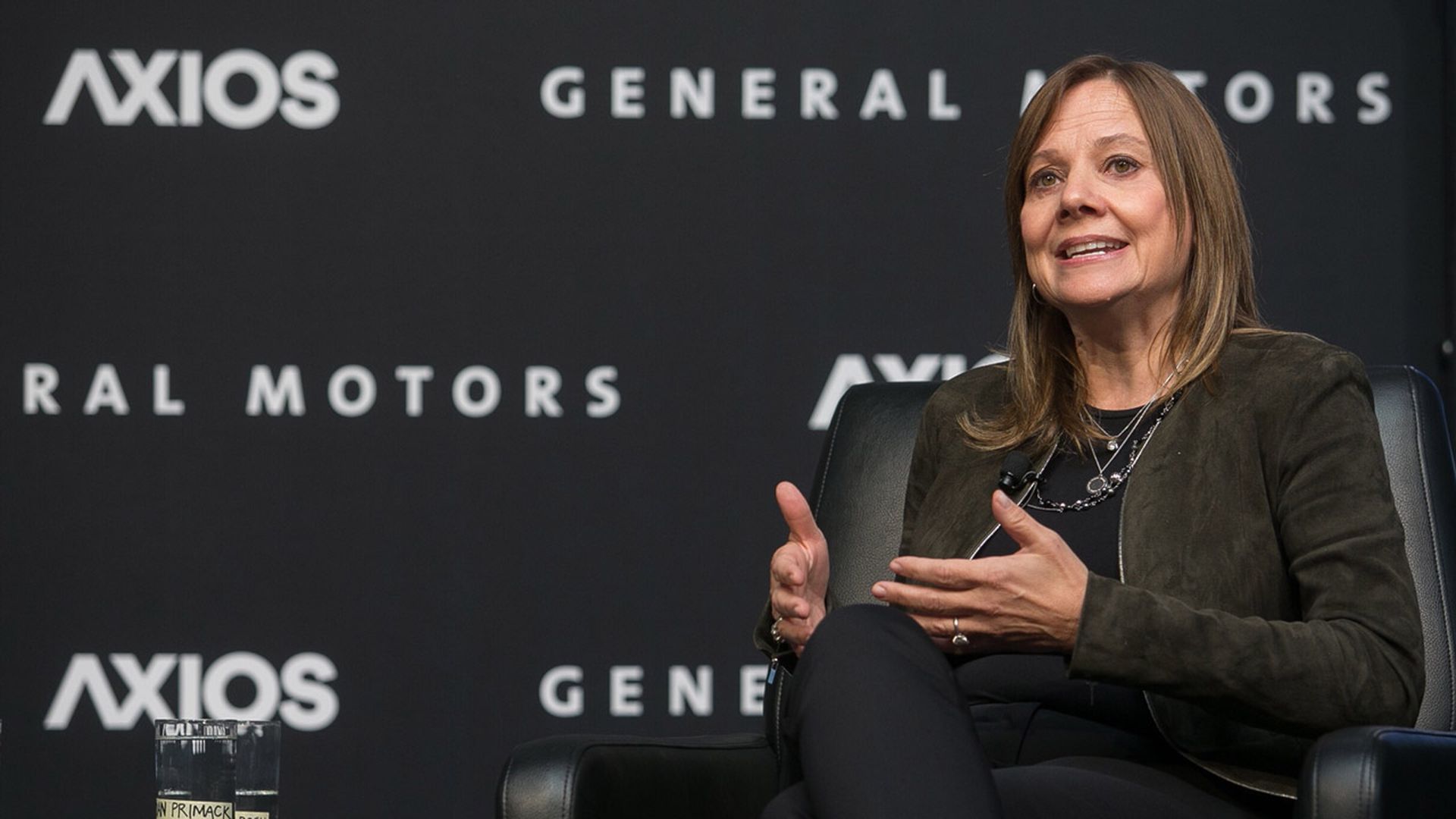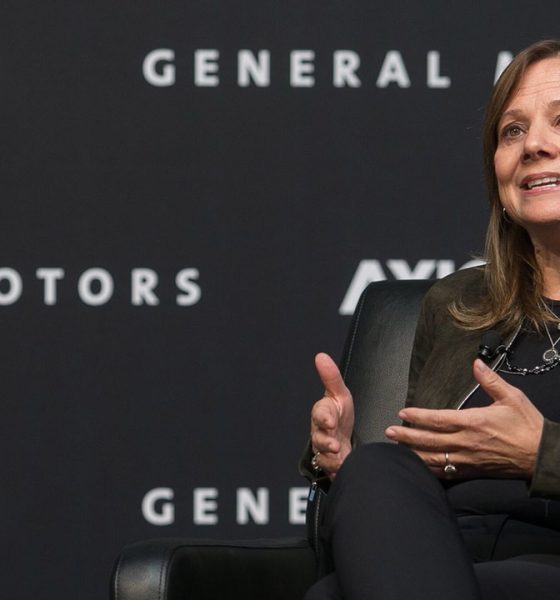

News
GM CEO Barra leans on price parity to take out Tesla in race to EV superiority
General Motors CEO Mary Barra has plans to catch Tesla by mid-decade, and she plans to lean on cheaper electric vehicles that are more comparable in price to gas cars to do it. Ultimately, Barra plans to be out-manufacturing and out-selling everyone, including Tesla, by the mid-2020s.
“We’re taking all the steps to do it,” Barra said on Yahoo! Finance earlier this week. “We have said that by mid-decade, we will be selling more EVs in this country than anyone else, including Tesla.”
A lofty goal in its own right, GM wants to outpace the world’s most successful electric vehicle company in the matter of a few years, outmaneuvering the Austin-based car manufacturer and its vocal CEO Elon Musk. More affordable cars are the key to the plan, which Barra solidified during the interview. You have to be able to offer people non-luxury cars and non-luxury prices, something Barra seems to believe Tesla is not able to do currently.
“Remember, we’re not necessarily just selling at the premium end,” perhaps stabbing at Tesla’s lineup, which has gone from sub-$40,000 to a shade below $47,000 for its most affordable Model 3 trim level. “We’re going to have electric vehicles affordable at $30,000.”
Tesla has upped prices on its electric vehicles for over a year with unpredictable-but-steady cost increases. Earlier this year, CEO Elon Musk blamed “inflation pressure” for the rises in price throughout Tesla’s lineup. Nevertheless, the company has not necessarily felt the effects of the inflation as demand continues to funnel in at healthy levels. Tesla reported its biggest quarter in Q1 with 310,048 vehicle deliveries. It also demolished Wall Street consensus estimates on its financial spreadsheet, beating EPS projections by nearly $1 and beating revenue estimates by nearly $1 billion. “Basically, the future is very exciting. I’ve never been more optimistic or excited about Tesla’s future than I am right now,” Musk said on the call.
While GM offers several affordable electric options, starting with the $31,500 Chevrolet Bolt EV and the $39,900 Chevrolet Silverado EV, which is expected to hit the market in Spring 2023, the automaker hits other sectors too. Its GMC Hummer EV offers high-powered luxury functionality, but GM has struggled with getting it to customers. It also has the Cadillac LYRIQ, another luxury vehicle that costs $58,795. These two vehicles are at premium price points, but that is not GM’s ultimate focus.
“We’ve really worked to listen and understand what the customer is looking for,” Barra said, which is perhaps one reason GM chose to partner with Honda on a series of EV models that could hit the market in 2027.
GM is fourth in the global EV market share with 7.6 percent. Tesla led 2021 with nearly 14 percent of the global EV market.
As for the race to EV superiority, Barra believes it is more of a marathon than a sprint, vowing to catch up to Musk and eventually pass him.
“I think it’s a little bit longer game.”
I’d love to hear from you! If you have any comments, concerns, or questions, please email me at joey@teslarati.com. You can also reach me on Twitter @KlenderJoey, or if you have news tips, you can email us at tips@teslarati.com.

News
Tesla FSD fleet is nearing 7 billion total miles, including 2.5 billion city miles
As can be seen on Tesla’s official FSD webpage, vehicles equipped with the system have now navigated over 6.99 billion miles.

Tesla’s Full Self-Driving (Supervised) fleet is closing in on almost 7 billion total miles driven, as per data posted by the company on its official FSD webpage.
These figures hint at the massive scale of data fueling Tesla’s rapid FSD improvements, which have been quite notable as of late.
FSD mileage milestones
As can be seen on Tesla’s official FSD webpage, vehicles equipped with the system have now navigated over 6.99 billion miles. Tesla owner and avid FSD tester Whole Mars Catalog also shared a screenshot indicating that from the nearly 7 billion miles traveled by the FSD fleet, more than 2.5 billion miles were driven inside cities.
City miles are particularly valuable for complex urban scenarios like unprotected turns, pedestrian interactions, and traffic lights. This is also the difference-maker for FSD, as only complex solutions, such as Waymo’s self-driving taxis, operate similarly on inner-city streets. And even then, incidents such as the San Francisco blackouts have proven challenging for sensor-rich vehicles like Waymos.
Tesla’s data edge
Tesla has a number of advantages in the autonomous vehicle sector, one of which is the size of its fleet and the number of vehicles training FSD on real-world roads. Tesla’s nearly 7 billion FSD miles then allow the company to roll out updates that make its vehicles behave like they are being driven by experienced drivers, even if they are operating on their own.
So notable are Tesla’s improvements to FSD that NVIDIA Director of Robotics Jim Fan, after experiencing FSD v14, noted that the system is the first AI that passes what he described as a “Physical Turing Test.”
“Despite knowing exactly how robot learning works, I still find it magical watching the steering wheel turn by itself. First it feels surreal, next it becomes routine. Then, like the smartphone, taking it away actively hurts. This is how humanity gets rewired and glued to god-like technologies,” Fan wrote in a post on X.
News
Tesla starts showing how FSD will change lives in Europe
Local officials tested the system on narrow country roads and were impressed by FSD’s smooth, human-like driving, with some calling the service a game-changer for everyday life in areas that are far from urban centers.

Tesla has launched Europe’s first public shuttle service using Full Self-Driving (Supervised) in the rural Eifelkreis Bitburg-Prüm region of Germany, demonstrating how the technology can restore independence and mobility for people who struggle with limited transport options.
Local officials tested the system on narrow country roads and were impressed by FSD’s smooth, human-like driving, with some calling the service a game-changer for everyday life in areas that are far from urban centers.
Officials see real impact on rural residents
Arzfeld Mayor Johannes Kuhl and District Administrator Andreas Kruppert personally tested the Tesla shuttle service. This allowed them to see just how well FSD navigated winding lanes and rural roads confidently. Kruppert said, “Autonomous driving sounds like science fiction to many, but we simply see here that it works totally well in rural regions too.” Kuhl, for his part, also noted that FSD “feels like a very experienced driver.”
The pilot complements the area’s “Citizen Bus” program, which provides on-demand rides for elderly residents who can no longer drive themselves. Tesla Europe shared a video of a demonstration of the service, highlighting how FSD gives people their freedom back, even in places where public transport is not as prevalent.
What the Ministry for Economic Affairs and Transport says
Rhineland-Palatinate’s Minister Daniela Schmitt supported the project, praising the collaboration that made this “first of its kind in Europe” possible. As per the ministry, the rural rollout for the service shows FSD’s potential beyond major cities, and it delivers tangible benefits like grocery runs, doctor visits, and social connections for isolated residents.
“Reliable and flexible mobility is especially vital in rural areas. With the launch of a shuttle service using self-driving vehicles (FSD supervised) by Tesla in the Eifelkreis Bitburg-Prüm, an innovative pilot project is now getting underway that complements local community bus services. It is the first project of its kind in Europe.
“The result is a real gain for rural mobility: greater accessibility, more flexibility and tangible benefits for everyday life. A strong signal for innovation, cooperation and future-oriented mobility beyond urban centers,” the ministry wrote in a LinkedIn post.
News
Tesla China quietly posts Robotaxi-related job listing
Tesla China is currently seeking a Low Voltage Electrical Engineer to work on circuit board design for the company’s autonomous vehicles.

Tesla has posted a new job listing in Shanghai explicitly tied to its Robotaxi program, fueling speculation that the company is preparing to launch its dedicated autonomous ride-hailing service in China.
As noted in the listing, Tesla China is currently seeking a Low Voltage Electrical Engineer to work on circuit board design for the company’s autonomous vehicles.
Robotaxi-specific role
The listing, which was shared on social media platform X by industry watcher @tslaming, suggested that Tesla China is looking to fill the role urgently. The job listing itself specifically mentions that the person hired for the role will be working on the Low Voltage Hardware team, which would design the circuit boards that would serve as the nervous system of the Robotaxi.
Key tasks for the role, as indicated in the job listing, include collaboration with PCB layout, firmware, mechanical, program management, and validation teams, among other responsibilities. The role is based in Shanghai.
China Robotaxi launch
China represents a massive potential market for robotaxis, with its dense urban centers and supportive policies in select cities. Tesla has limited permission to roll out FSD in the country, though despite this, its vehicles have been hailed as among the best in the market when it comes to autonomous features. So far, at least, it appears that China supports Tesla’s FSD and Robotaxi rollout.
This was hinted at in November, when Tesla brought the Cybercab to the 8th China International Import Expo (CIIE) in Shanghai, marking the first time that the autonomous two-seater was brought to the Asia-Pacific region. The vehicle, despite not having a release date in China, received a significant amount of interest among the event’s attendees.








